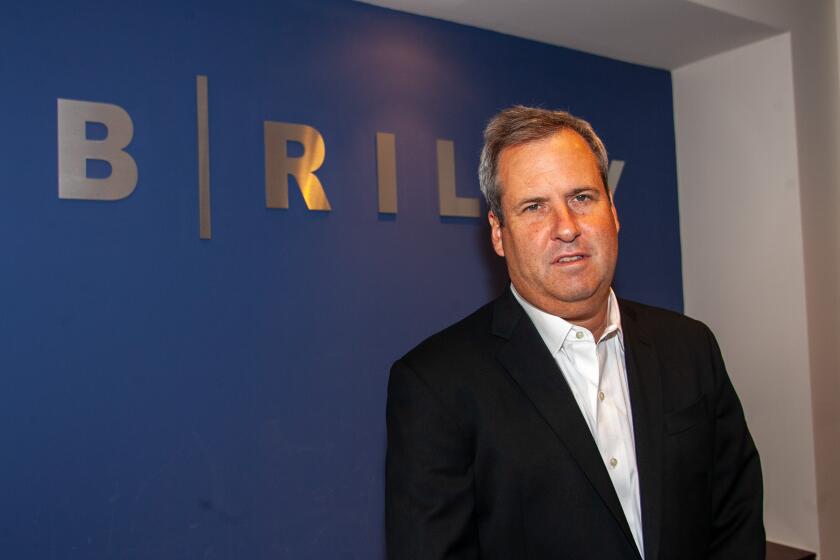Valley Business Districts Are Not Quick Fixes
Nearly two years after it was given permission to operate, a group dedicated to sprucing up a stretch of Van Nuys Boulevard just recently hired a landscape architect to design a new median.
The $70,000 worth of landscaping, which will replace a concrete strip, will be one of the first permanent upgrades within the Van Nuys Auto Row Business Improvement District since it was authorized by the Los Angeles City Council in August 1998.
The new median, expected to be finished in three to six months, illustrates the slow pace at which Business Improvement Districts, or BIDS, usually operate, at least in their infancy.
BIDs have a sparkling reputation among business people in general, having been credited with great success in New York and Philadelphia. Improvement districts in downtown Los Angeles and Hollywood have also drawn good reviews.
But for the most part, the San Fernando Valley’s eight BIDs represent the prospect of improvements to come, rather than proof of those already made.
“The Valley BIDs are pretty much in their early stages,” said Mike Vitkievicz, special assessments manager with the Los Angeles city clerk’s office, which acts as liaison to the city’s 25 business districts.
To create a BID, a majority of property owners or merchants in each geographically defined area must agree to assess themselves a fee based on storefront footage. A state law passed in 1994 created the BID system. Using federal grants, the city provided the seed money to help local business leaders organize.
But after a Business Improvement District is approved by the City Council and starts collecting tax money, it typically takes about three years to produce measurable results, Vitkievicz said.
“Most BIDs just crawl along until the first assessments come in,” said Larry Kosmont, president of Los Angeles-based Kosmont Partners, because the few other financing options that exist do not offer the flexibility of a BID.
“It’s a several-year process to get one going,” said Jim Stewart, program chairman for the Economic Alliance of the San Fernando Valley, which sponsored a BID conference in November at Cal State Northridge. Stewart said the Van Nuys Auto Row district is the only one of the eight in the Valley that is fully functioning.
While waiting for the funds to accumulate, business districts are often run by volunteers who have other, full-time jobs, Vitkievicz said. With six of the eight Valley BIDs having been approved in 1999 and two in 1998, he said, most aren’t likely to yield improvements until next year or the year after.
The Van Nuys BID has hired Susan Levi of Los Angeles-based Levi & Associates as director, has sponsored events like the Millennium Auto Show, and hopes to win city approval for permanent medallion-shaped signs marking the district.
*
All in all, it’s part of a plan to create a brand identity for the business neighborhood, Levi said.
The goals of the Van Nuys BID include cleaner streets, prettier landscaping, special events to bring in shoppers, and distinctive signs. The goals typify those of most Valley BIDs, which are battling to regain shoppers lost to snazzy new shopping areas or newly renovated malls.
“Most of the older business districts in the Valley are made up of a lot of mom-and-pop stores stretching a long way down the street. Those corridors usually can’t be redeveloped the same way that you can redevelop a mall,” said Helmi Hisserich, a BID consultant with Keyser Marston Associates in Los Angeles.
“Reseda and Canoga Park were thriving community business districts at one time, but with the advent of shopping malls, these areas really took a nose dive and were hurt economically,” said Los Angeles City Councilwoman Laura Chick, who walked door-to-door among businesses in her district to muster support for the Canoga Park BID, which was authorized by the City Council in May 1999.
The council also adopted on the same day ordinances authorizing BIDS in Reseda and Studio City.
In addition to the eight existing Valley BIDs, four have been proposed--in Encino, Northridge, Woodland Hills and North Hollywood. The four are among 22 proposed BIDs citywide, according to the City Clerk’s office.
The program has not yet undergone a thorough citywide examination, but City Councilman Mark Ridley-Thomas--generally a BID supporter--said it might be time for such a review.
“This is something you would do with any city program,” Ridley-Thomas said. “You evaluate the use of public funds.”
Vitkievicz said the City Clerk’s office hasn’t received a formal request to evaluate the progress of the BIDs and has not conducted any such studies, although he expects the City Council will examine BID expenditures when it begins budget sessions later this spring, if not before.
The City Council has allocated $1.3 million in seed money for the 25 existing BIDs, and has spent about $863,000 of that total, Vitkievicz said.
With Valley BIDs still in their early stages, representatives are meeting monthly to share ideas on how to achieve their goals, said Stewart, of the Economic Alliance.
He said the organization might host future seminars to address specific concerns of BIDs, like how to find financing in addition to the special property tax assessments, marketing, designing pedestrian-friendly areas and how to find BID consultants.
Valley Business Improvement Districts
Existing:
Canoga Park
Chatsworth
Granada Hills
Reseda
Sherman Oaks
Studio City
Tarzana
Van Nuys Auto Row
Proposed:
Encino
North Hollywood
Northridge
Woodland Hills
More to Read
Inside the business of entertainment
The Wide Shot brings you news, analysis and insights on everything from streaming wars to production — and what it all means for the future.
You may occasionally receive promotional content from the Los Angeles Times.










